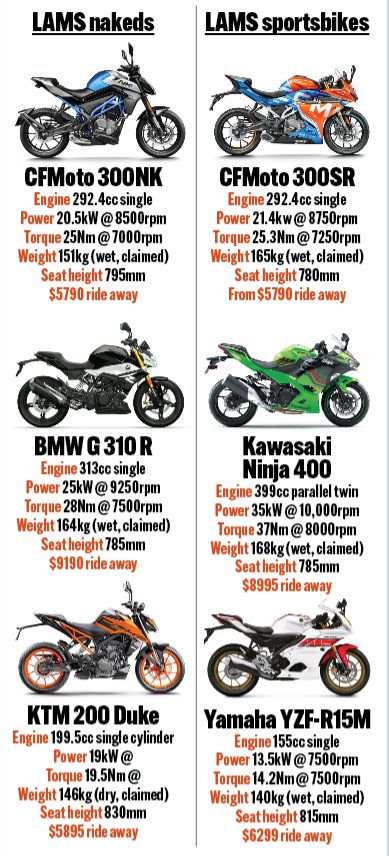Thanks to the Suzuki Gixxer 250 twins, just because you’re forced to do the LAMS thing doesn’t mean you have to spend a fortune or buy someone else’s problem
Being forced to get a LAMS-approved motorcycle, when you just want the quickest or best-looking beast on the planet, can plain old suck but it’s the way of things. These Gixxer 250 twins prove Suzuki gets it. It understands that most rookie riders are going to ditch that LAMS bike the moment they snag that full licence. Which means it also understands many of those riders aren’t going to want to cough up a bucket of money on a bike they’ll probably sell in the near future.
These two LAMS-approved bikes look the part, can do the business on the road and are wonderfully affordable, even compared to bikes in the secondhand market.
The two bikes are the new Gixxer 250 and Gixxer SF 250. The Gixxer 250 is the naked machine with a higher, wider handlebar, a more upright riding position and a very modest $6490 ride-away price tag. The Gixxer SF 250 is fully faired, has a sportier look, feel and riding position, and carries a ride-away price of $6790.
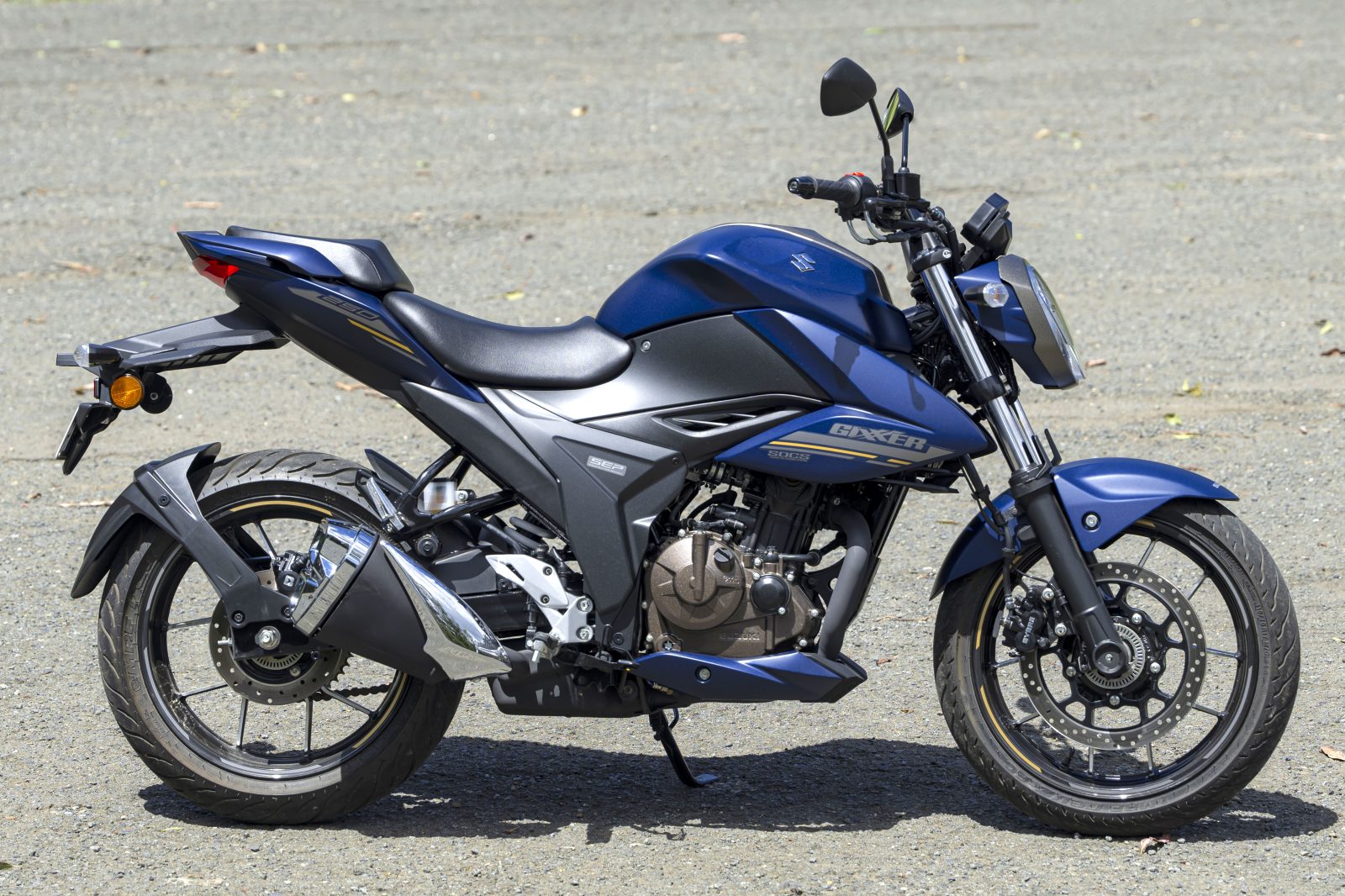
The Gixxer 250 is the naked machine with a higher, wider handlebar and a more upright riding position
Apart from those differences, the SF has a longer wheelbase and more trail for greater stability at speed, while the Gixxer 250 has a lower seat height and weighs less than the SF. Apart from that, the two are mechanically identical. There isn’t a lot of difference on paper but they roll very differently in the real world (see sidebar).
The dual-pronged Gixxer attack is powered by a fuel-injected, 249cc, oil-cooled, single-cylinder engine producing a claimed 19.8kW (26.7hp) at 9300rpm and 22.2Nm of cheap and cheerful fun. The engine is stolen straight from the Hamamatsu factory’s V-Strom 250SX adventure machine, as is the steel cradle frame that the SOHC motor finds itself within.
Neither Gixxer is going to set the world on fire but there’s enough squirt to grab the green light holeshot and keep ahead of the tin tops, and both will happily cruise along between 90 and 100km/h without throwing a valve through the head. Both tapped out at around the 125km/h mark with my 100kg-plus bulk on them, which is more than enough from a small-capacity commuter.
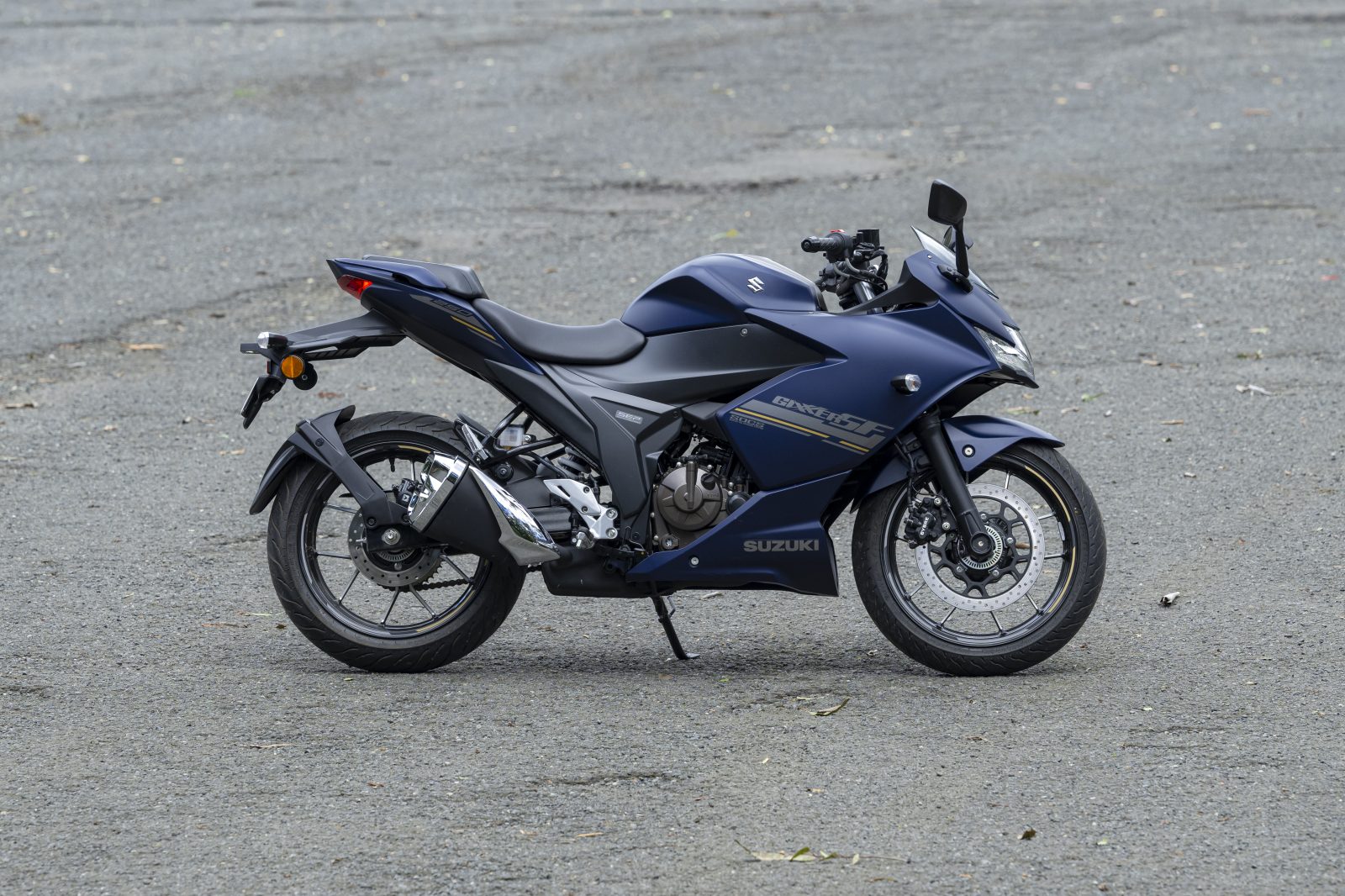
As well as a fairing, the SF has a longer wheelbase and more trail for greater stability at speed
The naked Gixxer has a claimed wet weight of 156kg, while the SF comes in a few kilograms heavier at 161kg. Five kilograms isn’t much but when you’re on a motorcycle with less than 20kW of mumbo available, it makes a difference and the naked version is noticeably peppier than the fully faired SF – you can easily pull a first-gear wheelie on the nakedbike, though it’s a tougher gig getting the front end up on the SF.
The engine is smooth and willing for its capacity and, based on Suzuki’s reputation for making almost indestructible engines, there’s a good chance it’ll keep going, and going, and end up powering some farm-built go-kart 50 years from now. The six-speed gearbox isn’t as sweet as the engine and, well, feels like it could have come from a 50-year-old farm-built go-kart. I’m exaggerating, of course, and it shifts fine if you’re assertive with the lever, but both machines throw up false neutrals between second and third gears regularly if you don’t shift with purpose when you’ve got the throttle pinned. This will probably get better with more kays on the clock.
The shape of the Euro 5-compliant exhaust is fairly extreme and Suzuki has tried to make both silencers more appealing by adding chrome covers, but the lack of chrome elsewhere means, to my eye at least, it’s only managed to highlight the odd-looking silencers rather than soften them. And it’d probably be easier to forgive if they sounded great, but they reduce most of that lumpy single-cylinder thump to something more akin to a gasp.
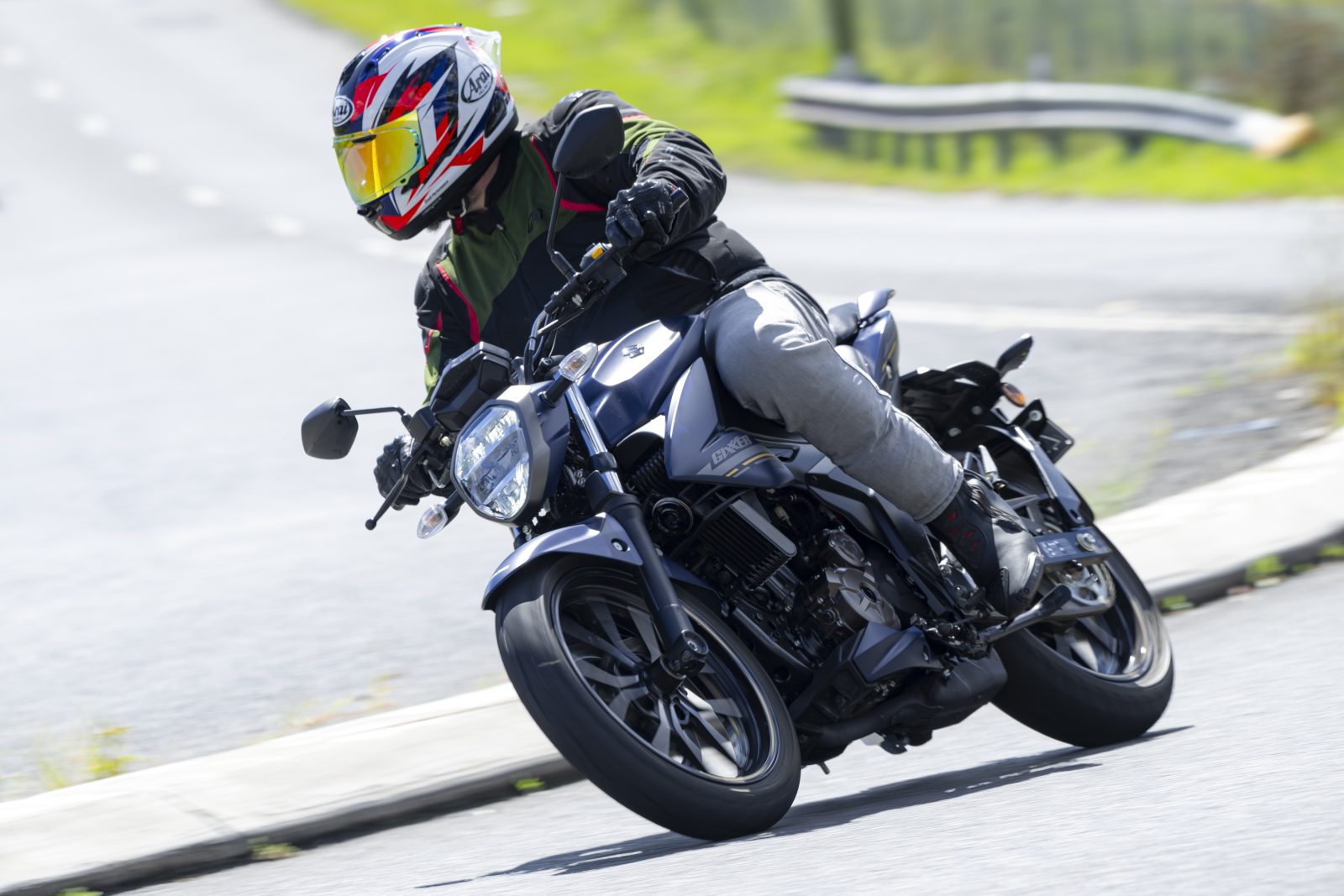
Pete gets down to business on the Gixxer. He was impressed with its unflustered performance when he turned up the wick on bumpy roads
Both machines utilise a non-adjustable 41mm conventional fork of an indeterminate brand, accompanied by a preload-adjustable monoshock on the rear that maintains control over a steel swingarm. The suspension is basic, yet surprisingly effective, especially given my weight and the speeds at which I typically ride. Both bikes adeptly absorb bumps, providing a smooth yet firm ride without excessive harshness.
It’s worth mentioning that adjusting the rear preload requires removing the rear hugger but, really, the base settings are good enough that it’ll only be the most enthusiast tinkerers who will go to this length.
For standard street use, I rate both bikes for their decent suspension performance and overall handling. Even when pushing hard on twisty country roads at high speeds, it takes considerable effort to make either Gixxer misbehave – and I tried! And even then, it’s just a matter of some wallowing on fast, bumpy corners, with larger hits causing a bit of a jarring response from the front-end. However, I was pushing the Gixxers well beyond how Suzuki intended them to be used.
Braking duties are handled by Brembo’s entry-level brand, Bybre, and feature a single 300mm front disc gripped by a twin-piston caliper on the front, while the rear employs a 220mm disc squeezed by a single-piston caliper. The braking performance is perfectly adequate for the performance level. Although feel through the non-adjustable front lever is somewhat wooden – that will improve with time (there was only 200km on the odo) – there’s ample power at both ends.
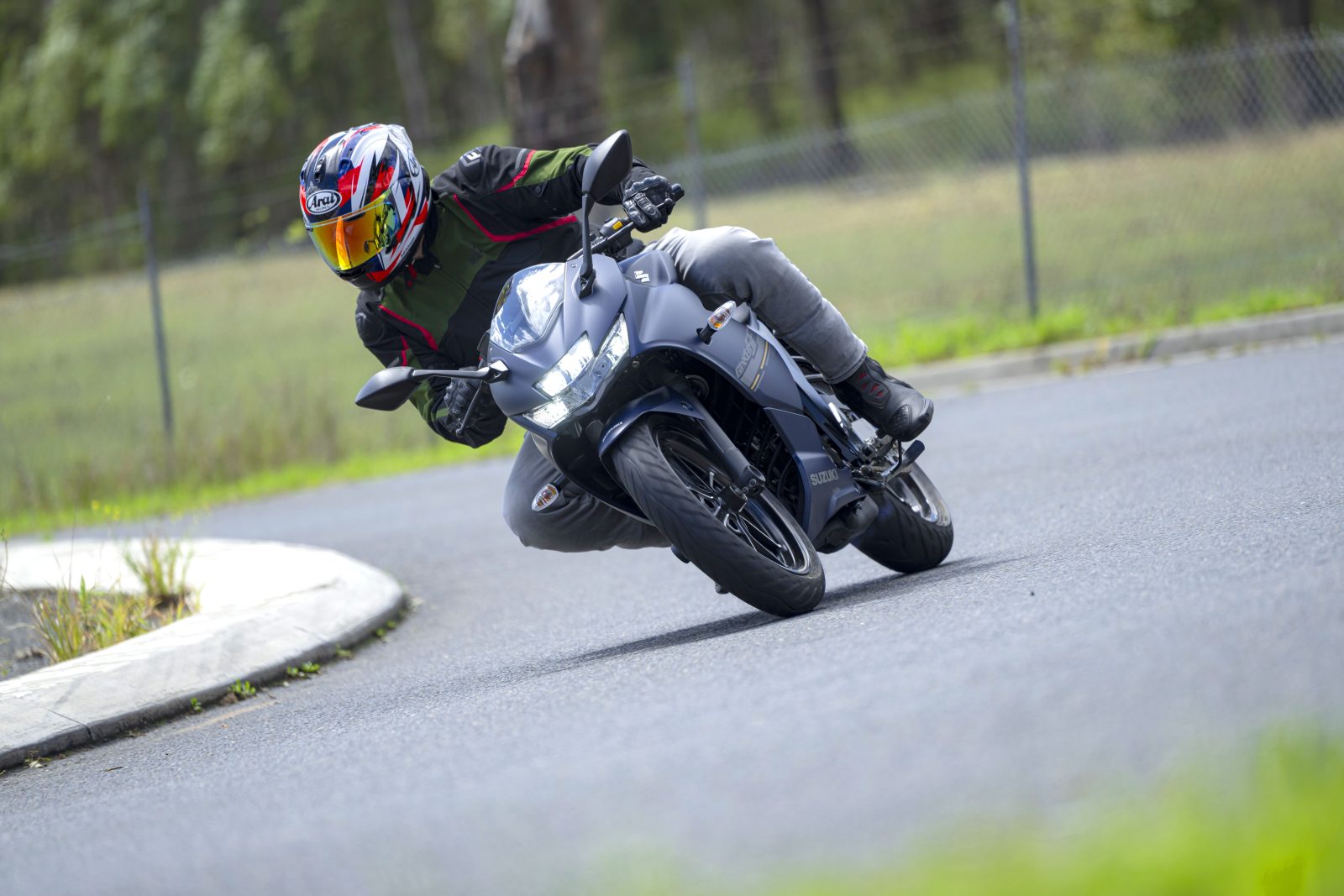
Well-designed fairing on the SF doesn’t look like it’s built down to a price
A dual-channel ABS system is in place and, while the front ABS is a bit intrusive, the system is offering a practical and effective safety blanket while you’re learning your craft. Also keeping the cast-alloy wheels grounded is commonly sized 110/70-17 and 150/60-17 rubber, which means vast options for stickier or more durable tyres if you’re not happy with the MRF Revz fitted to both bikes as standard. The MRF rubber performed pretty well… no moments, scares or complaints here and I rode in both wet and dry conditions.
For novice riders, the Gixxer and Gixxer SF both tick the performance box just fine. They both offer relatively solid engine performance, competent and predictable handling, and brakes that are up to the task. However, in the realm of LAMS bikes, other considerations come into play beyond performance. Seat height and weight, for instance, are significant factors for many new riders and both score high here.
The Gixxer 250 boasts a seat height of 795mm, while the SF has a slightly higher height of 800mm. These numbers are really accessible and combined with the low weight and slender profiles of both models, they’ll make Learner life just that little bit less intimidating.
Both seats are firm but comfortable, and the slim junction between the 12-litre tank and the seat helps get those pins towards the ground. Despite the compact size of both machines, the riding position is comfortable – even for larger riders like me – and I had no hassles moving about or hanging off either bike. The tank, seat and rear-end are identical between the two models so the feel from the cockpit, apart from the difference in ’bars, is the same.
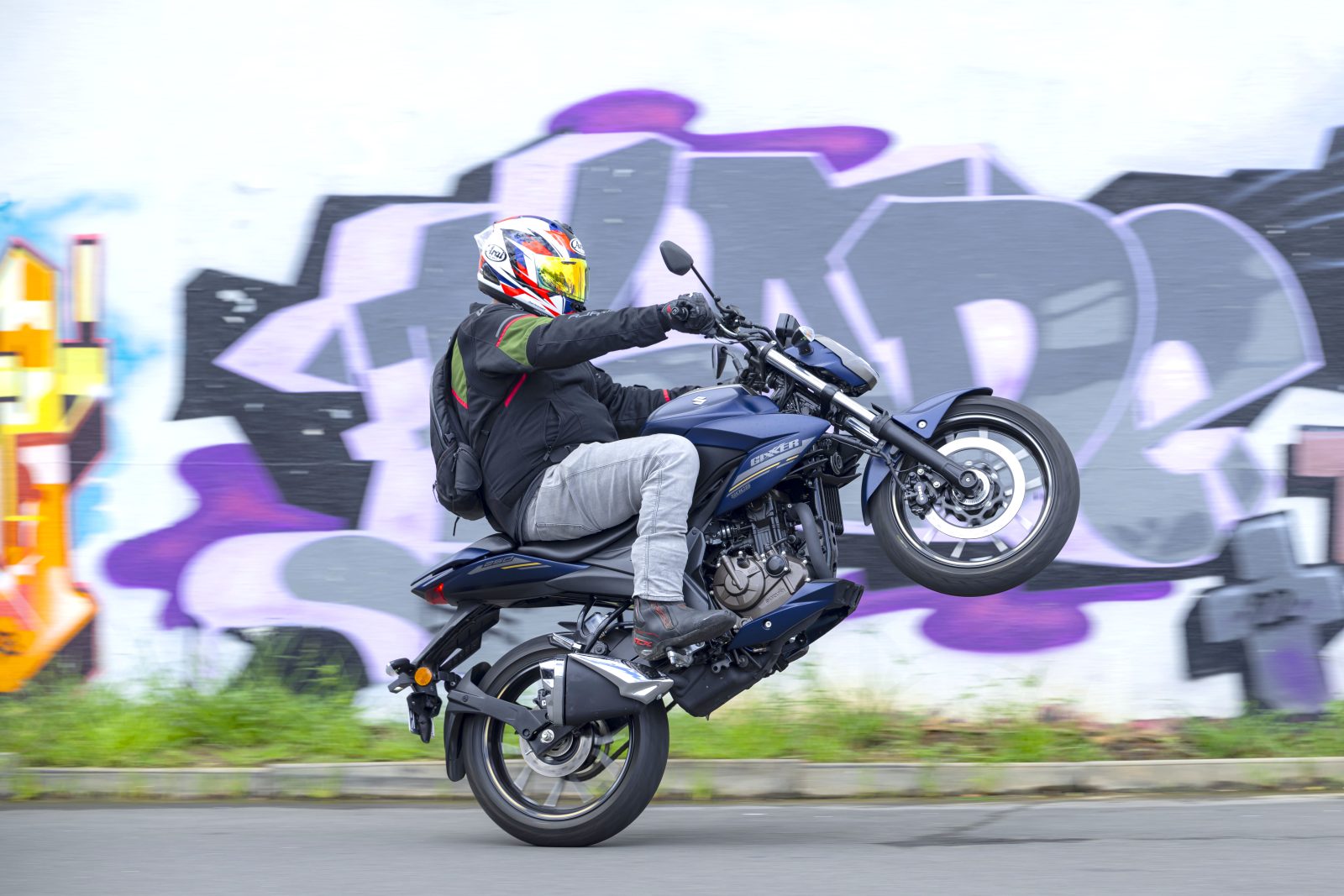
Why? Because Pete has an ambition to wheelie every motorcycle model on the planet
There is surprisingly good pillion accommodation, with a pillion pad that looks decent, and there’s a set of sturdy grab handles fitted. I’m not sure I’d be dragging too many pillions on a bike of this size and, if you’re on your Ls or Ps you’re not allowed to anyway, so most owners will use the pillion accommodation space as a useful place to strap gear.
Considering their affordable price tags, the finish of both bikes is commendable. Aside from that silencer, the matte black and matte blue paint schemes are well executed and don’t look tacky, which some schemes appealing to a younger audience can tend to do.
The dash is a straightforward digital display – no pretty colours here, but it’s easy to read in any light and, without modes and a thousand menus to navigate, it’s really simple. It still provides all the information you need, including an oil-change indicator light, an adjustable shift light, twin trip meters, an odo, tacho, clock and fuel gauge.
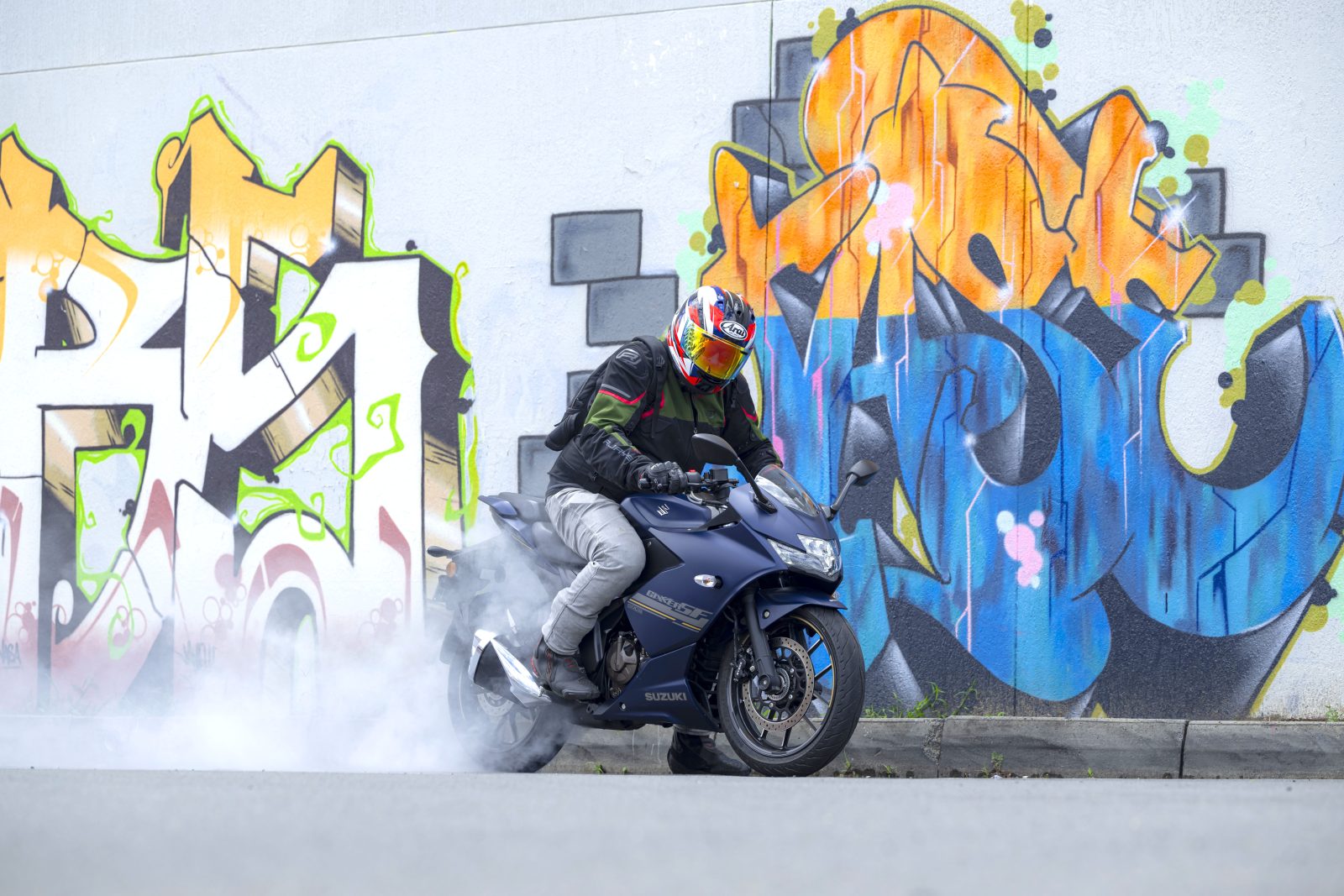
Making sure the rear tyre is nice an warm before Pete makes his getaway with a backpack full of spray paint
The Gixxer 250 and Gixxer SF 250, like the mini V-Strom, are produced in Suzuki’s Indian manufacturing plant, which is why it can offer these two at such keen prices. It’s important to note that Suzuki doesn’t just farm out production to some shonky local manufacturer, the Gixxers are built in a Suzuki facility, to Suzuki’s exact standards, so I wouldn’t be concerned about the quality of the product.
If you’re dismissing these bikes as ‘cheap’, then they’re probably not intended for you. The Gixxer 250 and Gixxer SF 250 are targeting riders seeking a LAMS-approved bike that combines good looks, decent performance and affordability. Suzuki has undoubtedly succeeded in hitting the mark in this regard.
TEST: PETE VORST


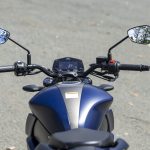
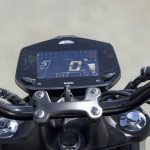
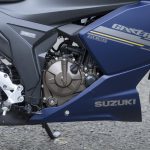

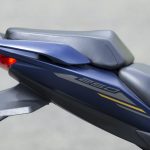

SPECIFICATIONS
ENGINE
Capacity 249cc
Type Single-cylinder, SOHC, 4 valves
Bore & stroke 76.0mm x 54.9mm
Compression ratio 10.7 : 1
Cooling Air/oil
Fueling EFI
Transmission Six-speed
Clutch Wet, multi-plate
Final drive Chain
PERFORMANCE
Power 19.5kW @ 9300rpm (claimed)
Torque 22.2Nm @ 7300rpm (claimed)
Top speed 130km/h (est)
Fuel consumption Gixxer 2.9L/100km, SF 2.7L/100km (measured)
ELECTRONICS
Type Suzuki
Rider aids Dual-channel ABS
Modes Not applicable
CHASSIS
Frame material Steel
Frame type Cradle
Rake 24°
Trail Gixxer 95mm, SF 96mm
Wheelbase Gixxer 1340mm,
SF 1345mm
SUSPENSION
Type Suzuki
Front: 41mm telescopic fork,
non-adjustable, 120mm travel
Rear: Monoshock, adjustable preload, 133mm travel
WHEELS & BRAKES
Wheels Cast aluminium
Front: 17 x 3.0 Rear: 17 x 4.0
Tyres MRF Revz
Front: 110/70R17
Rear: 150/60R17
Brakes Bybre
Front: Single 300mm disc,
twin-piston caliper
Rear: Single 220mm disc,
single-piston caliper
DIMENSIONS
Weight Gixxer 156kg, SF 161kg
(wet, claimed)
Seat height Gixxer 795mm, SF 800mm
Width Gixxer 805mm, SF 740mm
Height 1035mm
Length 2110mm
Ground clearance 165mm
Fuel capacity 12L
SERVICING & WARRANTY
Servicing First: 1000km
Minor: 5000km
Major: 10,000km
Warranty Three years,
unlimited km
BUSINESS END
Price Gixxer $6490, SF $6790
(ride away)
Colour options Matt Blue or Matt Black
Contact
suzukimotorcycles.com.au
THE COMPETITION
